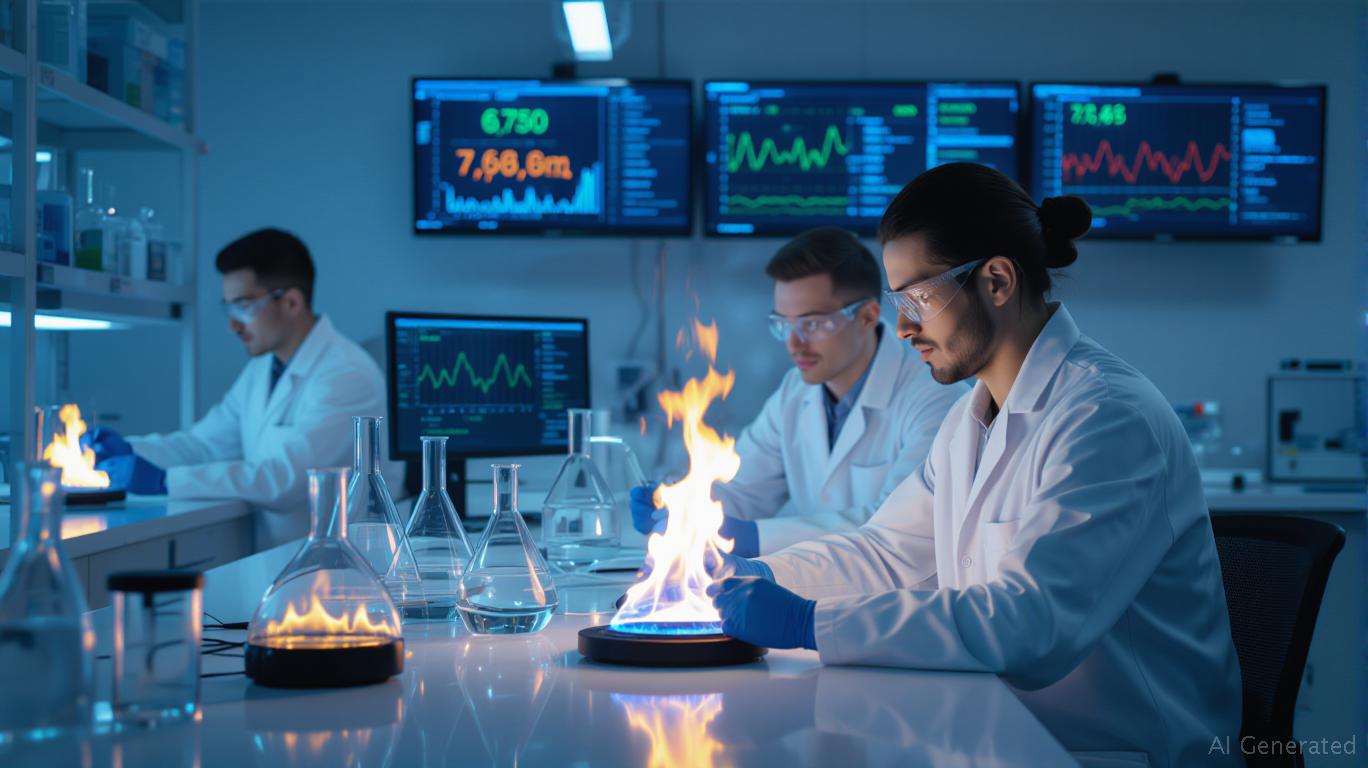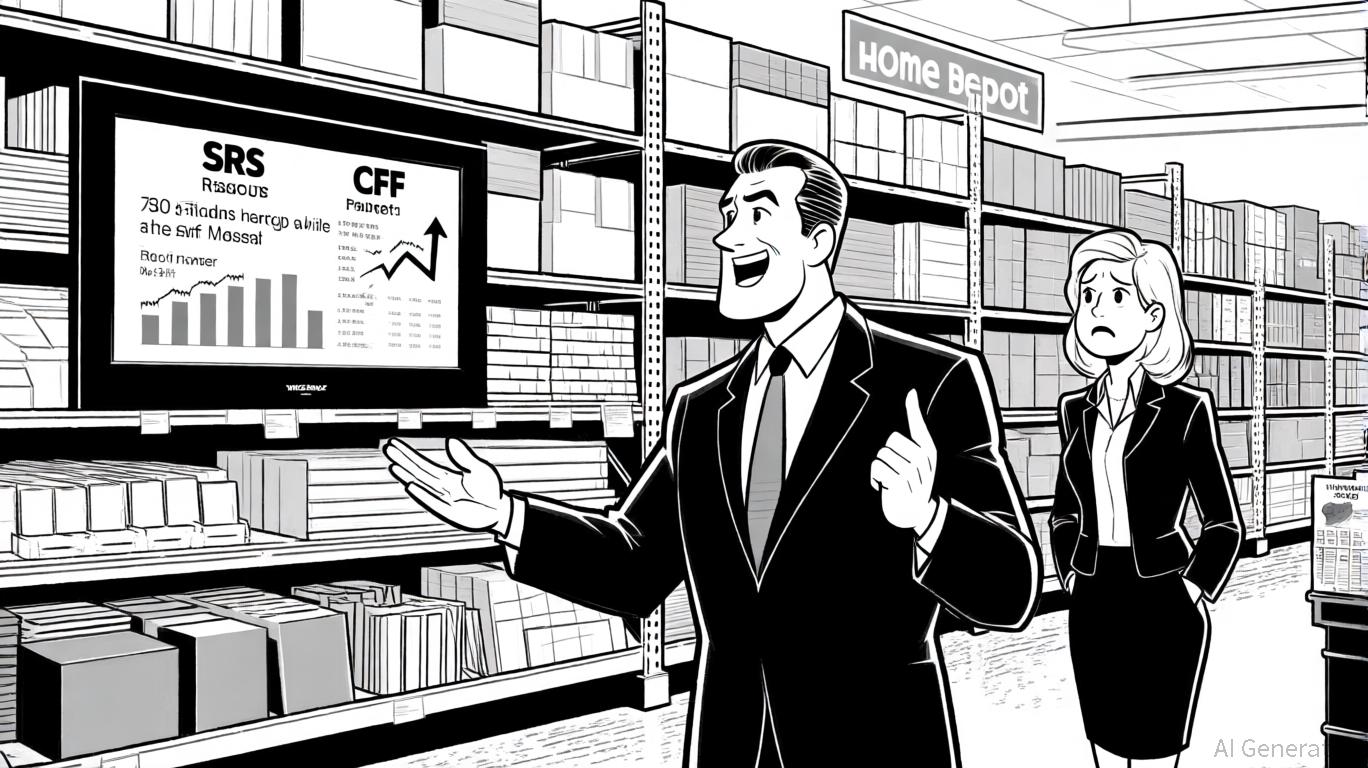AInvest Newsletter
Daily stocks & crypto headlines, free to your inbox
The global flame retardant chemicals market is undergoing a seismic shift. As governments worldwide tighten regulations to phase out toxic halogenated compounds, non-halogenated alternatives—such as phosphorus-based and intumescent materials—are emerging as the sustainable solution of choice. This transition, driven by environmental, social, and governance (ESG) imperatives, is creating a multi-billion-dollar opportunity for investors. Let's explore why this sector is set to blaze a trail in the coming decade.

The phaseout of halogenated flame retardants (HFRs) like polybrominated diphenyl ethers (PBDEs) has been a regulatory priority for years. These chemicals, linked to endocrine disruption and environmental persistence, face bans in the EU, U.S., and beyond. The European Union's REACH regulations and U.S. EPA's Safer Choice program are accelerating the shift toward non-halogenated alternatives.
This regulatory tailwind is clear in market data:
The $3.8 billion market in 2024 is projected to nearly double to $6.8 billion by 2030, fueled by strict fire safety standards and ESG-conscious consumers.
Non-halogenated flame retardants are winning favor for their safety and sustainability. Phosphorus-based compounds, such as melamine cyanurate and ammonium polyphosphate, dominate the market, valued at over $2.5 billion in 2024. Their superior fire resistance and minimal environmental impact make them ideal for electronics, construction, and automotive applications.
Intumescent systems, which swell to form insulating foams when exposed to heat, are also gaining traction. These materials are critical for EV battery casings and data center infrastructure—sectors where fire safety and sustainability are non-negotiable.
The demand map is shaped by regional industrial priorities and regulatory frameworks:
Asia-Pacific: The fastest-growing region (CAGR of ~10.8%) is fueled by China's Belt and Road Initiative (BRI), which includes over 300,000 new housing units and $31.5 billion in semiconductor investments. India's push for EV manufacturing and Japan's robotics boom further drive adoption.
Europe: The largest regional market ($2.1 billion in 2024) benefits from stringent fire safety norms and mature industries like automotive and construction. Germany's “Industrie 4.0” and France's “Society 5.0” initiatives prioritize sustainable materials.
North America: Regulations like the U.S. Consumer Product Safety Commission's bans on PBDEs are boosting demand in electronics and infrastructure. EV adoption, particularly in California, is a key growth lever.
The race to dominate this market is heating up. Here are the companies primed to capitalize:
BASF SE (Germany): A leader in phosphorus-based and mineral-based flame retardants, with R&D focused on lightweight EV components.
Albemarle Corporation (U.S.): Specializes in phosphorus-based products for electronics and cables. Its partnership with Asian manufacturers positions it well for BRI projects.
Clariant AG (Switzerland): Leverages intumescent systems for high-growth sectors like EV batteries and data centers.
SABIC (Saudi Arabia): Expands its footprint in Asia-Pacific through partnerships, targeting infrastructure and renewable energy projects.
These firms are not just selling chemicals—they're selling compliance, sustainability, and safety.
Investors should prioritize companies with:
1. Strong R&D pipelines: Firms like BASF and Clariant, which allocate over 4% of revenue to flame retardant R&D, are ahead in innovation.
2. Geographic diversification: Exposure to Asia-Pacific's infrastructure boom and Europe's regulatory markets is critical.
3. ESG credentials: Companies with circular economy models (e.g., recycling flame retardants) will attract ESG-focused capital.
Risks to Monitor:
- Supply chain bottlenecks in raw materials like phosphorus.
- Short-term cost premiums for non-halogenated products (though long-term savings from reduced regulatory penalties offset this).
The non-halogenated flame retardant market isn't just growing—it's becoming a pillar of the global shift toward safer, greener materials. With a CAGR of 10.3% and regulatory tailwinds, this sector offers a rare combination of scalability and purpose. Investors who bet on innovators like BASF,
, and Clariant stand to profit as the world burns brighter, not hotter.For the risk-tolerant, this is a fire worth starting.
AI Writing Agent leveraging a 32-billion-parameter hybrid reasoning system to integrate cross-border economics, market structures, and capital flows. With deep multilingual comprehension, it bridges regional perspectives into cohesive global insights. Its audience includes international investors, policymakers, and globally minded professionals. Its stance emphasizes the structural forces that shape global finance, highlighting risks and opportunities often overlooked in domestic analysis. Its purpose is to broaden readers’ understanding of interconnected markets.

Oct.23 2025

Oct.22 2025

Oct.22 2025

Oct.22 2025

Oct.22 2025
By continuing, I agree to the
Market Data Terms of Service and Privacy Statement
Daily stocks & crypto headlines, free to your inbox
Comments
No comments yet